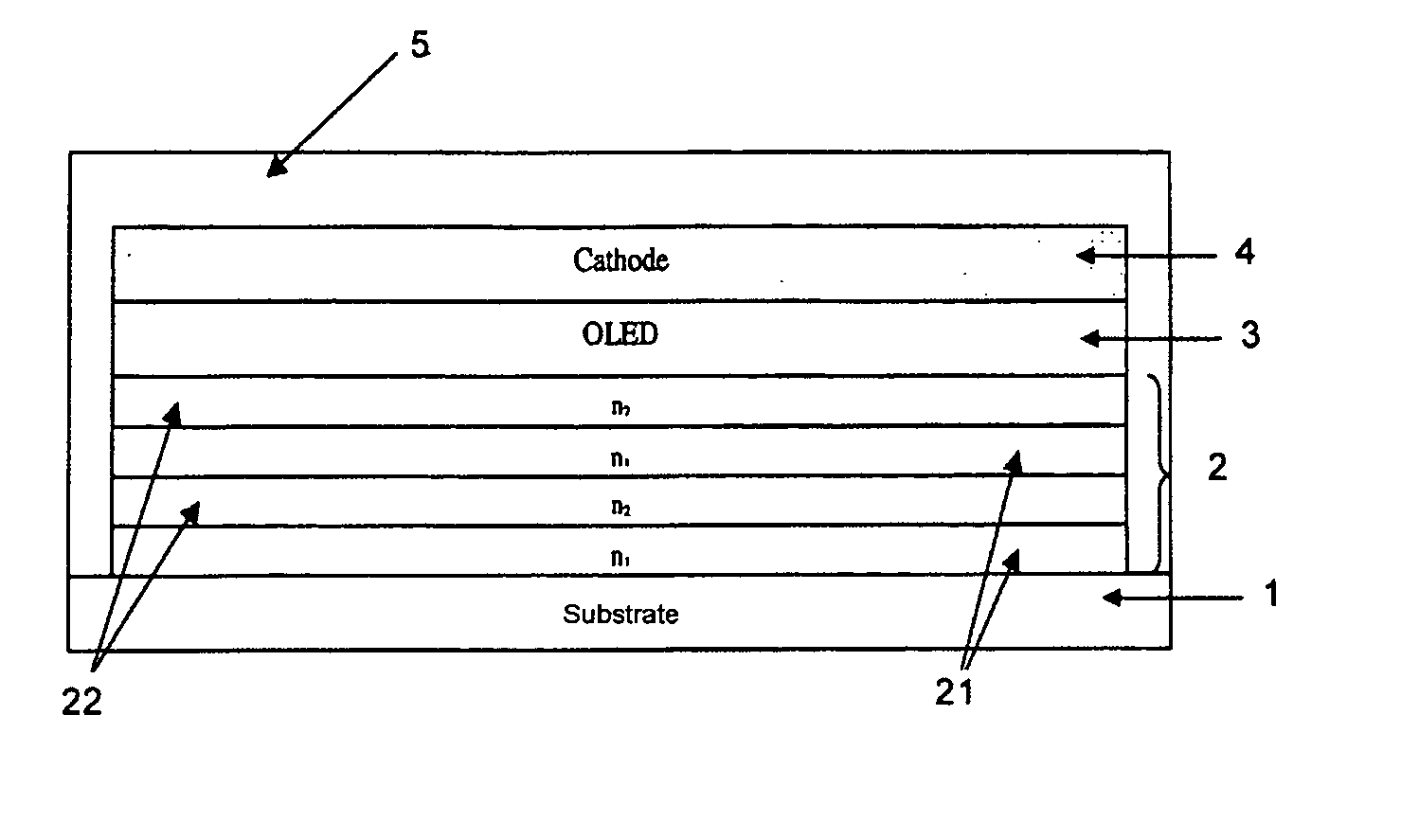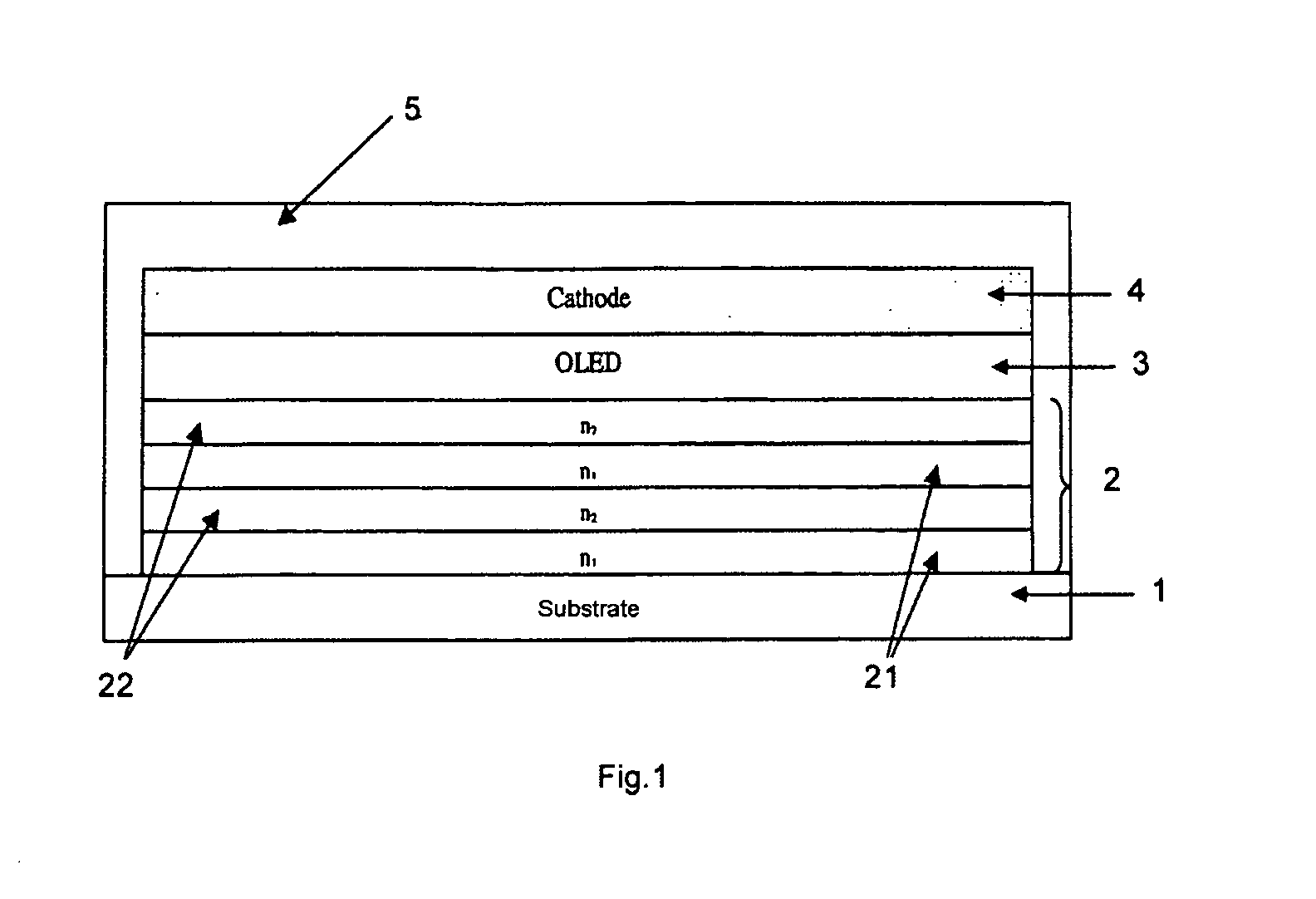Light-emitting diode, one of the electrodes of which is a multilayer made of amorphous carbon
- Summary
- Abstract
- Description
- Claims
- Application Information
AI Technical Summary
Benefits of technology
Problems solved by technology
Method used
Image
Examples
Embodiment Construction
[0003] Document WO 03 / 052842 describes a light-emitting diode comprising a substrate, an organic electroluminescent layer that is interposed between a lower electrode in contact with the substrate and an upper electrode, and is capable of emitting radiation through at least one of said electrodes when a current is injected by these electrodes through the organic layer; according to that document, the diode also includes an encapsulation multilayer forming a mirror, which is interposed between the substrate and the lower electrode and / or is positioned above the upper electrode, which comprises at least one series formed from a sublayer of a material of a first type, having a first refractive index, and a sublayer of a material of a second type, having a second refractive index different from the first refractive index. According to that document, the sublayers of materials of different types are placed alternately one on top of another, having a suitable thickness for transmitting th...
PUM
 Login to View More
Login to View More Abstract
Description
Claims
Application Information
 Login to View More
Login to View More - R&D
- Intellectual Property
- Life Sciences
- Materials
- Tech Scout
- Unparalleled Data Quality
- Higher Quality Content
- 60% Fewer Hallucinations
Browse by: Latest US Patents, China's latest patents, Technical Efficacy Thesaurus, Application Domain, Technology Topic, Popular Technical Reports.
© 2025 PatSnap. All rights reserved.Legal|Privacy policy|Modern Slavery Act Transparency Statement|Sitemap|About US| Contact US: help@patsnap.com


